Types and varieties of echinacea
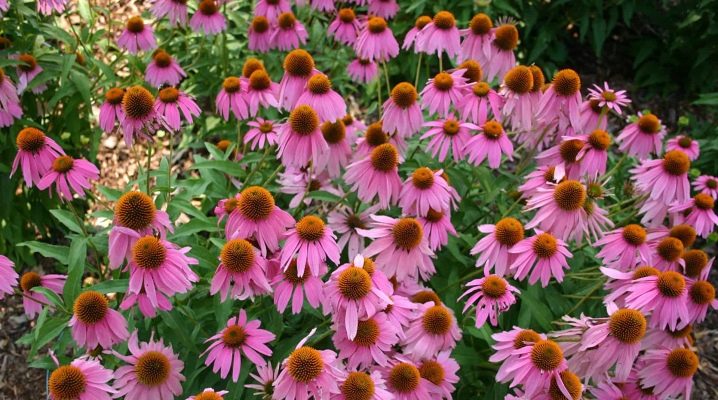
Knowing the types and varieties of echinacea is desirable for any gardener who decides to breed it. Attention should be paid to such types as "Secret Glow" and "Aloha", "Cleopatra" and other varieties. Terry perennial flowers, globular and other varieties should also be studied.
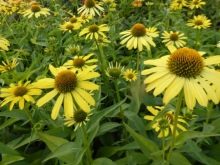
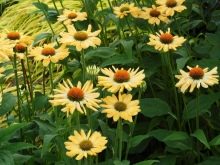
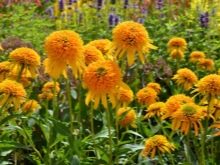
Description of Echinacea angustifolia
This perennial flower did not get its name in vain - it really has narrow, whole-edged foliage. The plant reaches a height of 1 m. There are both straight and moderately branched specimens. The rosette foliage includes 5 well-visible veins below and long petioles. The leaves on the stem are arranged in a regular pattern; they are longer in the initial part of the stem, and are shortened closer to the apex.
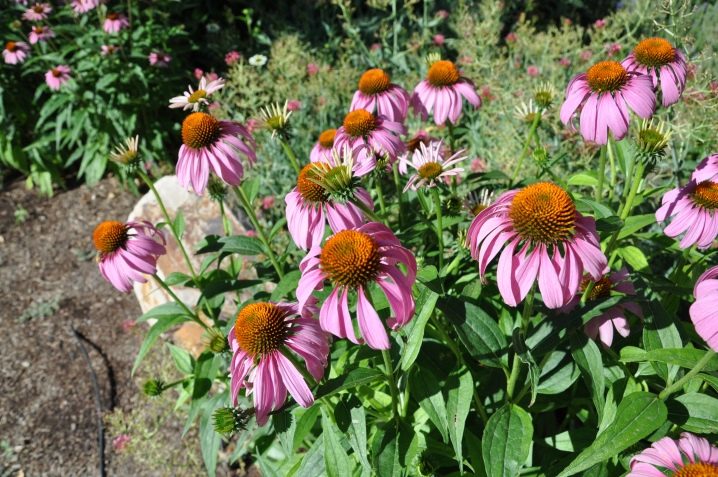
Echinacea purpurea and its varieties
Such a plant, like other varieties of echinacea, originated on the North American continent. You can meet a similar view on rocky ground. They also find it on the sandy shores of reservoirs, especially in the east of America.
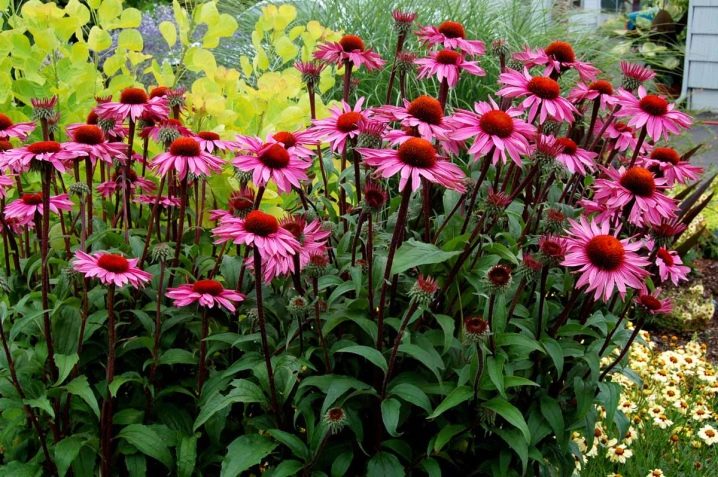
It is a typical herbaceous perennial. It can grow in one place for 5 or 6 years.
Purpurea echinacea produces erect stems. They are mostly simple in structure. Branching, if present, is weakly expressed. The stems themselves are either simple green or slightly reddish. The stem has infrequent pointed setae throughout its length.

Foliage is predominantly grouped in basal rosettes. It is represented by wide leaves, the tips of which are pointed. The edge can be both solid and jagged. The petioles are long enough. The bristles on this foliage will cover both sides.
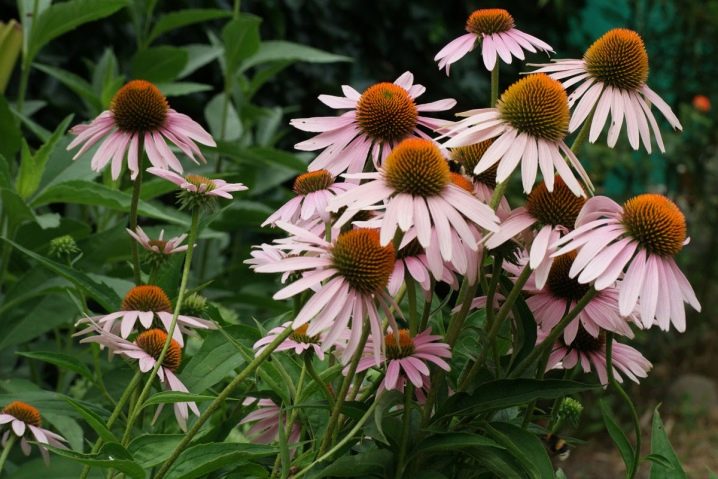
This species is distinguished by long and, moreover, abundant flowering. Its peduncles are very long. They develop single inflorescences resembling baskets. These inflorescences have different shades of purple. Such echinacea has long attracted the attention of breeders, they continue to work with it now.
Variety "White Swan" grows to a small height. It has reed (white) and disc (orange-colored) flowers. Such a culture emits a pleasant aroma, much like honey.

Echinacea "Razmataz" is different:
- terry type of inflorescences;
- drooping lower flowers;
- the formation of the upper flowers due to the torn edges of a large pompom.
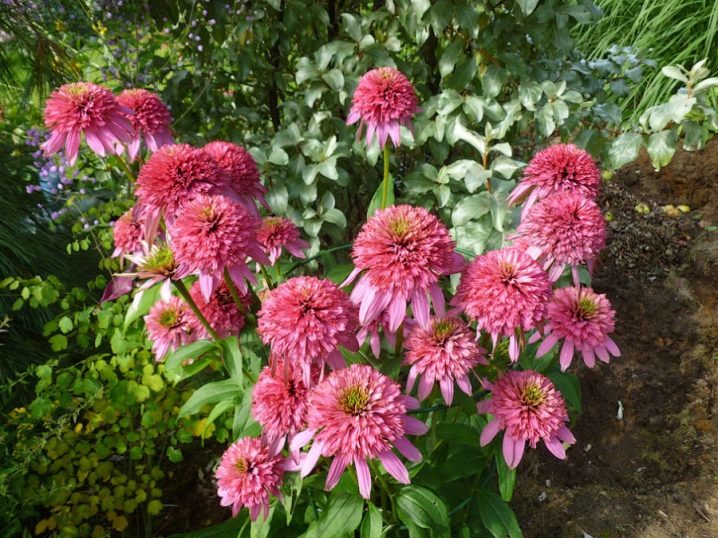
Variety "Secret Glow" stands out for its non-standard colors. Such plants will have a lot of flowers. Terry type of these flowers is characteristic. They are orange-yellow in color. The standard section is 70-80 mm, the height reaches 650 mm, and the width is 600 mm.
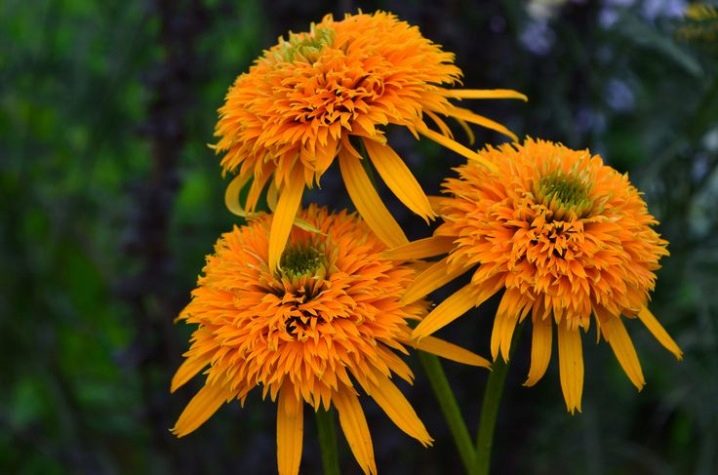
Varietal "Aloha" forms delicate yellow flowers. They have a pronounced orange center. Height can reach 800mm. The width is up to 550 mm. It most often blooms in July and August, and is best in full sun.
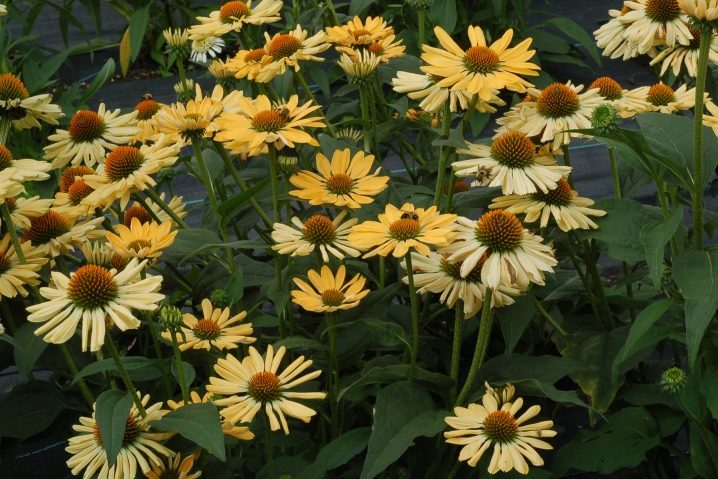
Echinacea "Cleopatra" is prized for its attractive dark foliage. This is a small-sized view - up to 350 mm in height and up to 300 mm in width. The cores of the flowers provide an amazing contrast to the petals that change color along their length. The variety tolerates frost, is grown in the sun and in partial shade.

Purple echina, regardless of the variety, can be grown even in northern areas. It can withstand heat and frost down to -34 degrees. Autumn pruning of the aboveground part is recommended.
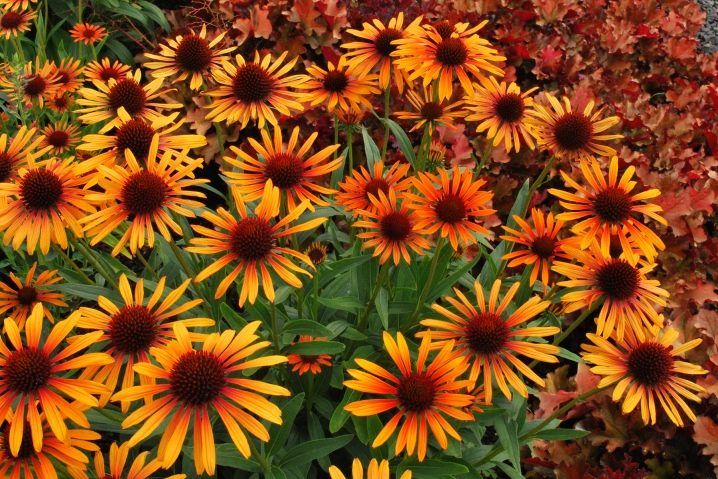
Mulch helps to increase the protection of the plant, which is used as leaves, peat or spruce paws.
Illumination is critical.The larger it is, the longer and more effective flowering will be. In order for Echinacea purpurea to develop well, it is watered, albeit in moderation, but regularly. All specimens are irrigated in the evenings. Young shoots are watered only at the root.

It is necessary to fertilize this type of plant three times during active growth. With the arrival of spring, nitrogen mixtures are used. As soon as flowering begins, it is time for complex formulations. When autumn comes, it is necessary to feed the plant with phosphorus and potassium. Important: if this species is grown not for decorative, but for pharmacological purposes, before planting, the soil must be enriched with useful substances and after that the bushes must be fed with organic matter.
Echinacea purpurea has low seed germination. To mitigate this deficiency, the planting material is soaked in the Epin solution. Varietal characteristics are not transmitted by seed breeding.
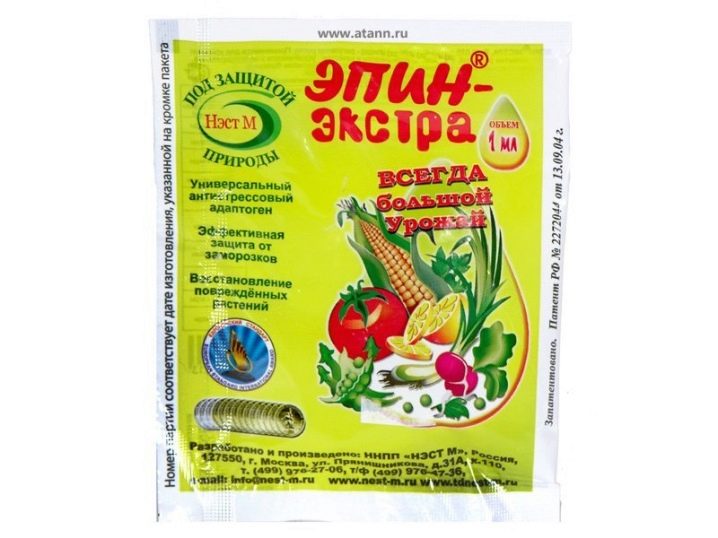
Dividing the bush turns out to be a more effective solution. You can do it in the spring and autumn months equally sensibly.
Other varieties
Dark red
This type of echinacea comes from eastern Oklahoma and Texas. Basically, this plant grows on dry ground next to limestone and sandstone outcrops. The height can reach 0.9 m. Root branching is also noted.
Stems and leaves are predominantly pubescent. Naked specimens are rare. The stems themselves are colored light green or brownish yellow. The length of the seeds is 0.4-0.5 cm. The species has 11 chromosomes and blooms in late spring.

Smoothed
This species is included in the list of endangered plants in the United States. There it is found in the foothills to the east. Natural populations are confined mainly to road shoulders and other open areas. The plant again needs abundant light, mainly develops on earth saturated with magnesium and calcium. The leaves are spear-like in shape.
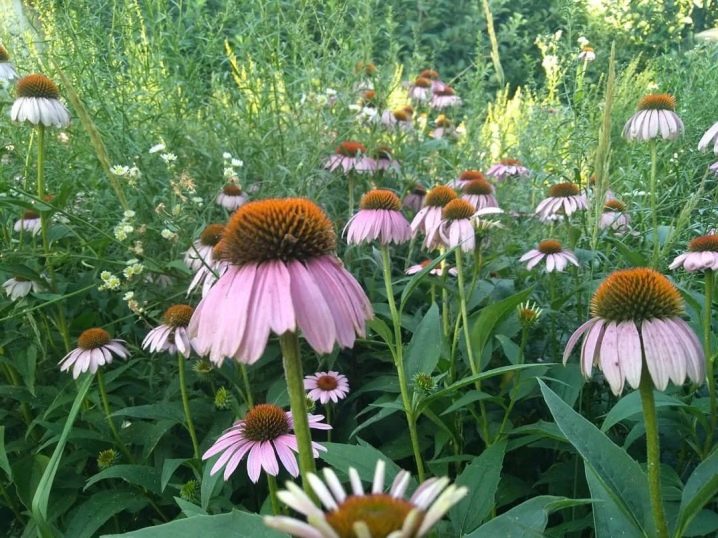
Smoothed echinacea will bloom in May, June and July. The fruits are of the achene type; botanists suggest that they are carried by birds and small terrestrial animals that feed on vegetation. Basically, the species grows in sunny forest areas. Soils with a high content of magnesium and calcium are beneficial. The natural range includes:
- South and North Carolina;
- Virginia;
- Georgia (formerly also Pennsylvania and Maryland).
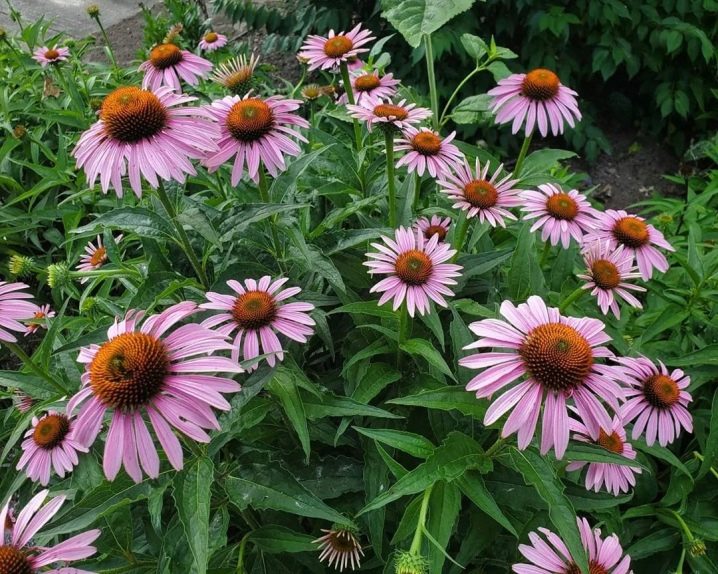
Pale
It is able to compete successfully with the popular purple variety. Over the past 20 years, this type has become a little more in demand in Russia and neighboring states. Pale Echinacea can grow up to 100-120 cm. The perennial has a powerful root system and elongated lanceolate leaves. The stems and foliage are pubescent, the petals reach 50-70 mm in length; the saturation of their color changes frequently.
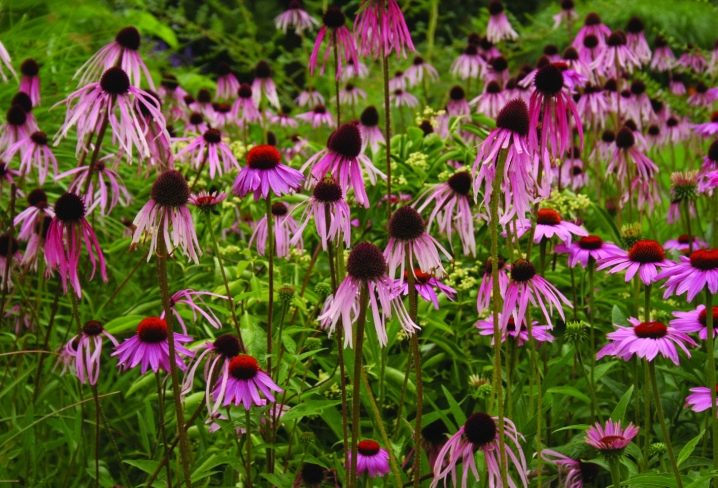
Echinacea pallidum is perfectly perceived in both isolated and group planting. Its heavy inflorescences will sway smoothly when the wind blows. Each edge flower has delicate petals that are more sensitive than any weather vane.

When flowering, this type of plant produces excellent nectar and a large volume of pollen. He is an excellent honey plant.
It's not just a lot of honey - it turns out to be incredibly high levels. Even experienced beekeepers are happy with such a product. Everything about it is good - taste, consistency, smell and color. The examination showed that such advantages are associated precisely with the pollen of plants new to Russia.
Pallidum echinacea rhizome lengthens vertically (just like horseradish). It is formed thoroughly already in the first year of development. Flowering will begin in the second year. A culture can live in one place for up to 10 years. Its pharmacological properties are no less attractive than decorative characteristics.
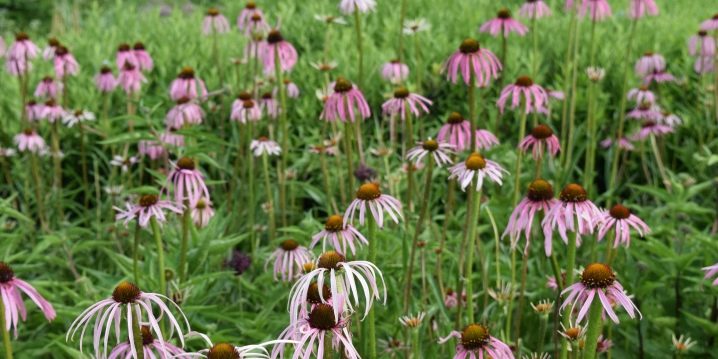
Strange
Among the best plant species, this species really stands out. It is appreciated for its bright and spectacular appearance. There are no other yellow plants in the genus. The bushes are dense, but small in size, the height does not exceed 0.8 m. Other features:
- green toothed foliage with pubescence;
- flowers with a cross section of up to 120 mm;
- brown bulging center in these flowers;
- flowering period from July to September.
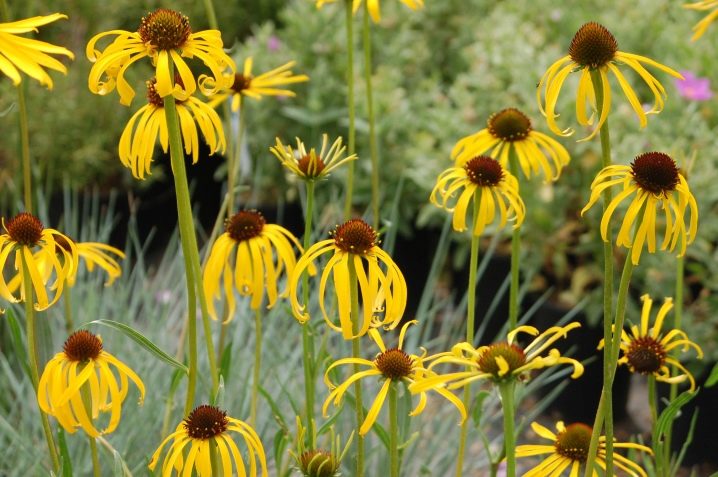
Tennessee
The species got its name thanks to its natural growth in the US state of Tennessee. Plant height reaches 0.75 m. It has dark green lanceolate foliage. Shoots sometimes branch slightly.
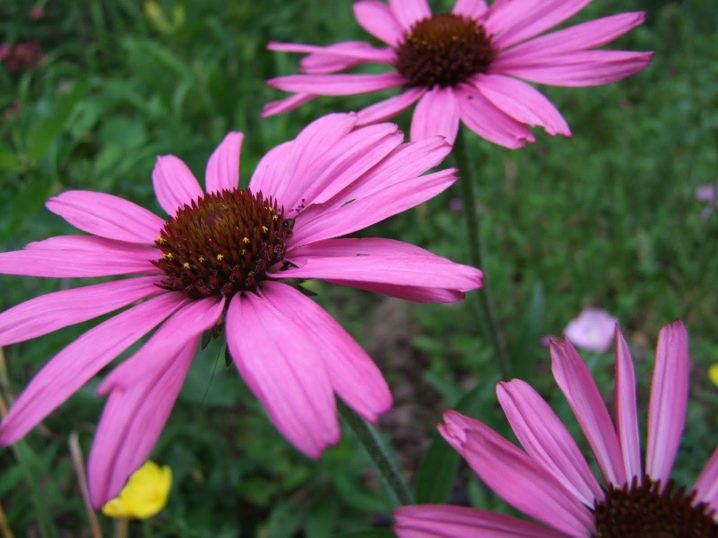
There are very few petals in the bud, and the distance between the baskets is strictly the same.
Simulating
Wavy foliage is typical for her. This species inhabits the center and east of the United States. Its exact range has not yet been determined. It has been established that growth is mainly formed in forests and wastelands. It blooms from late spring to mid-summer.
The plant differs from a similar species not only in a different number of chromosomes, but also in yellow pollen grains. But separation from E. Pallida will still require efforts from taxonomists. The height reaches 0.5-1 m (measured above the branched taproot, similar to a spindle). Spread hairs on leaves and stems stand out well.
Most of the stems are colored green. There are also purple-speckled solutions. Leaves near the root have petioles 40-200 mm long. The blades have 3 or 5 ribs. At the base, the foliage gradually tapers, single flower heads are formed on a peduncle with a length of 200 to 400 mm. The length of the flowers is from 1 to 1.4 cm; each fruit contains 1 seed.
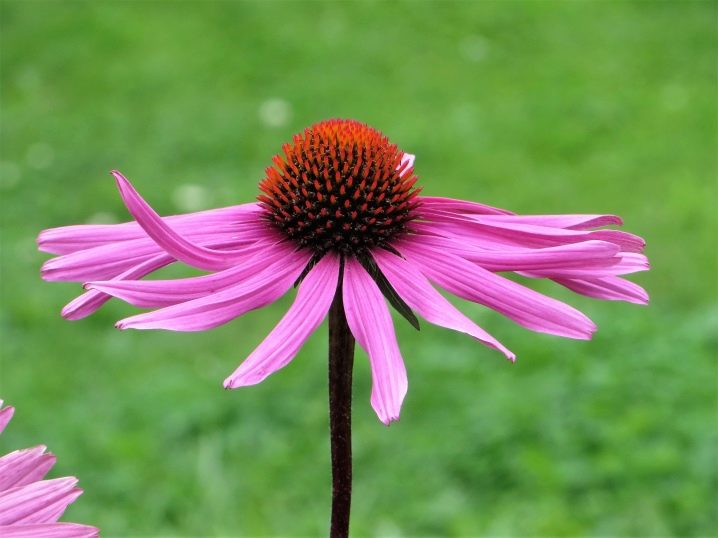
An example of terry echinacea is grade "Magnus"... Its flowers reach a section of 120 mm. The stems are tough and rough. A brown-yellow color of the core is noted. Purple-violet petals are placed at the edges.
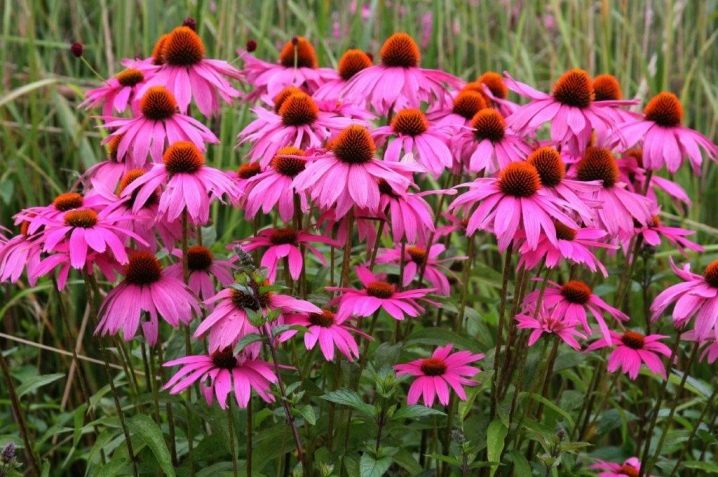
Excellent white color has grade "Prair Splendor White Compact"... It develops over many years and grows up to 1.2 m. As in the previous case, the stems will be rough. Flowering, which begins in June, lasts about 60 days.
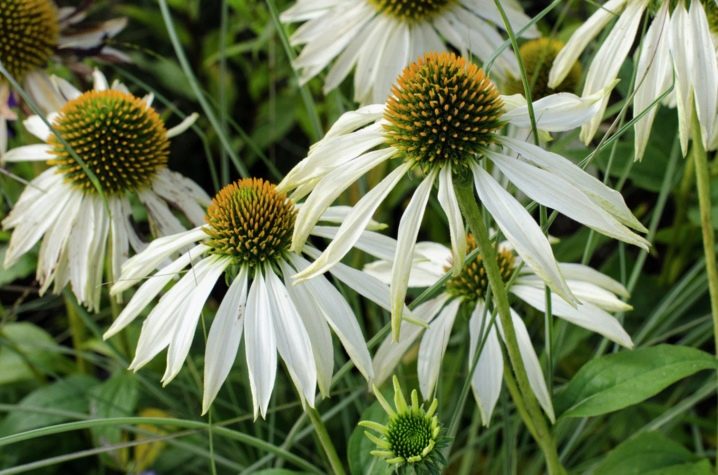
Introduced in 1692, the plant requires pollinating insects.
A two-year development cycle and a rare level of frost resistance are characteristic of globular echinacea. This bushy plant blooms in July and August. Its height can reach 2 m. The fruits will be 12 mm achenes.
Visually, this look is not similar to the usual echinacea, but to the thistle. The nectar is released actively at 25-30 degrees. This perennial is neutrally undergoing the most varied acid-base reaction of the soil. It is used not only in decorating personal plots and gardens, but also in live and dry bouquets. It is often used as a filler for hedges.

The assortment includes mixtures of different varieties of echinacea. Each such combination compares favorably with other options. It is necessary to carefully deal with its main features and nuances. Enjoys a good reputation dark pink Bravado... She can grow up to 120 cm.
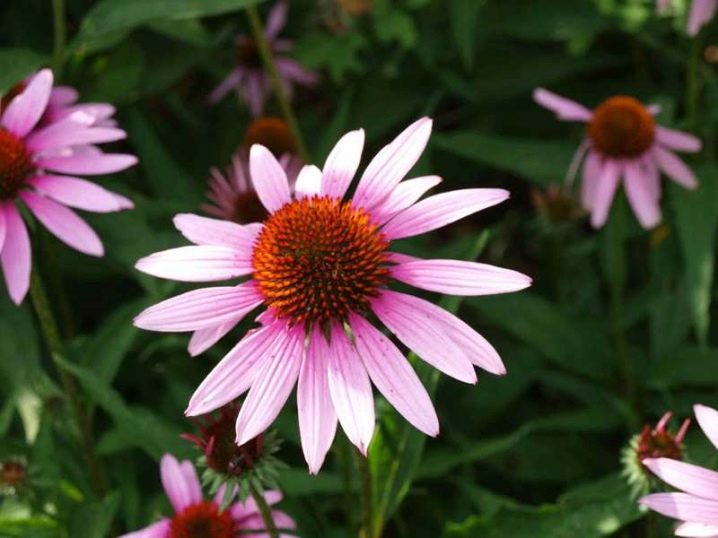
Flowering begins unevenly, from late May to early July. The weather is decisive. The oval leaves at the root are often serrated. Growing in mixborders and small autonomous groups is encouraged.
It is advisable to choose sunny locations with well-drained soil; such a variety grows poorly on the sand.
Pau Wow Wild Berry variety also pink. Its flowers have a lingual structure and are distinguished by a bright pink or fuchsian color. 10-centimeter inflorescences are characteristic. Mostly dry steppe and forest areas are suitable. The plant reaches a height of 0.6 m.
Bushes "Pow Wow Wild Berry" branch very actively. The shoots are very strong. Development in one place can take up to 10 years. Basically, the culture is planted in curbs and in sun-drenched flower beds. It is also used in container compositions.
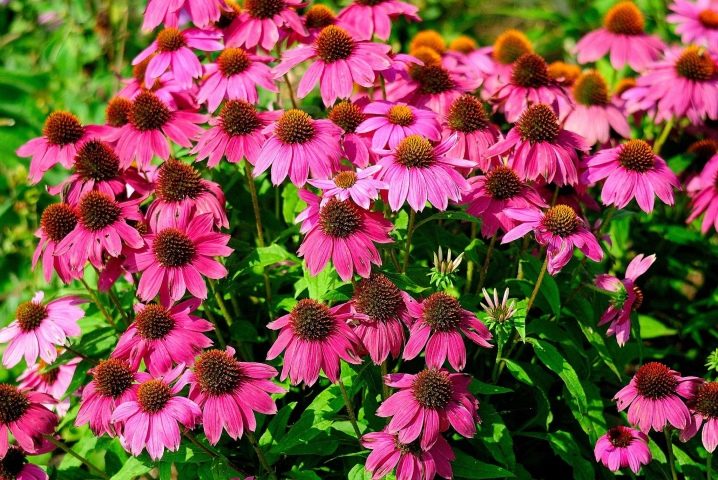
Hybrid Echinacea "Cheen Spirit Mix" blooms from June to August. Its flowers are painted in a variety of tones. At a height of 35-50 cm, the width reaches 50 cm. In the bright sun, the inflorescence will not fade.

The tallest stems need support, and a light cover is required for the winter.
From July to September, the Tangerine Dream variety blooms. Its bright orange flowers thrive in the sun. The plant is used in groups, in mixborders, and in beddings. The height of the erect stem reaches 90-100 cm. Good drainage of the soil and timely moderate watering are important.

Another hybrid - "Mini Bell" - with a maximum diameter of 40 cm and a height of 60 cm. Such echinacea is used in single and group plantings. It is suitable for mixborders, rockeries and planting together with conifers. It is also possible to grow on lawns and classic flower beds. Bloom can be enjoyed almost throughout the entire calendar summer.
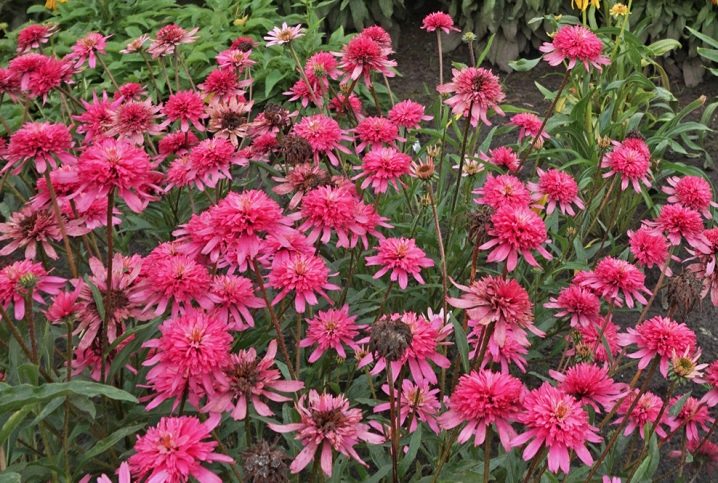







































































































The comment was sent successfully.